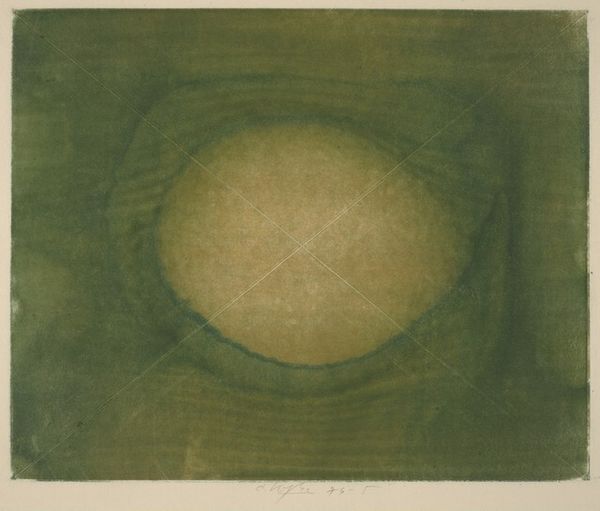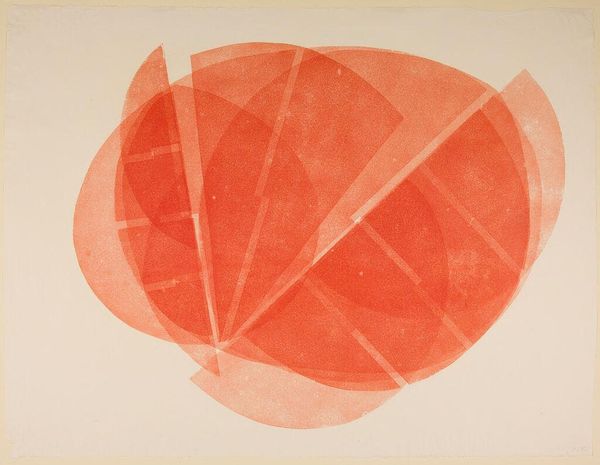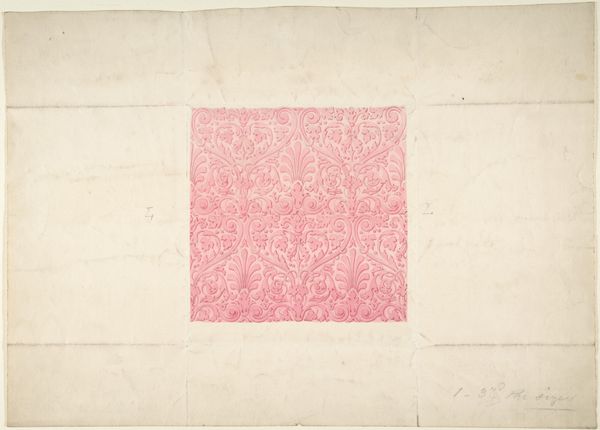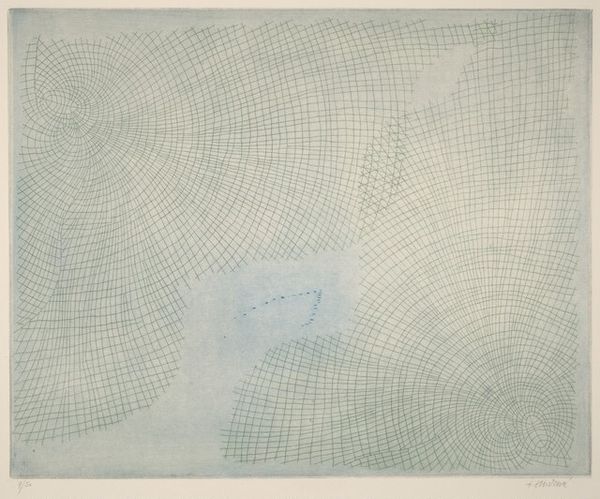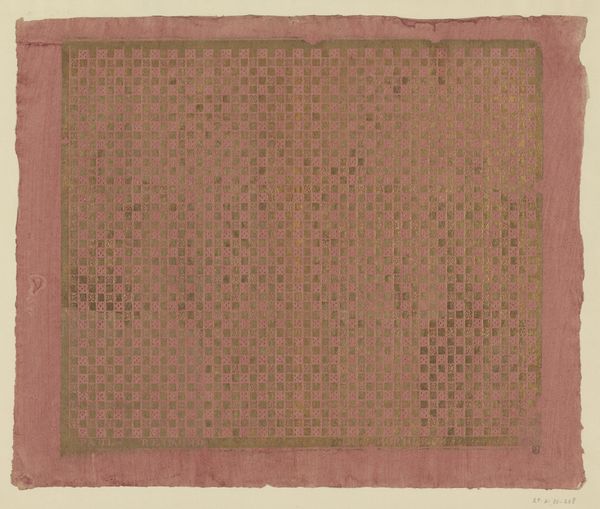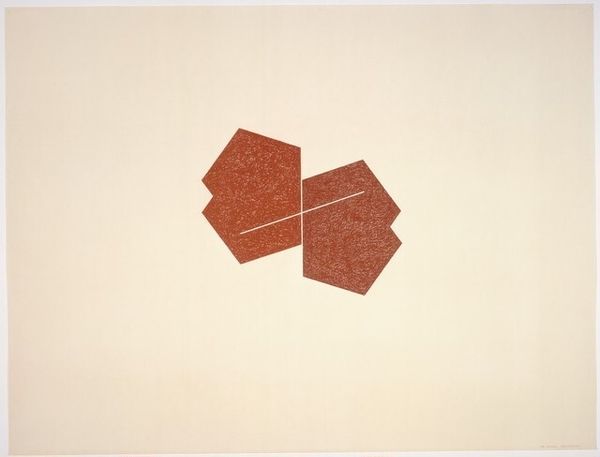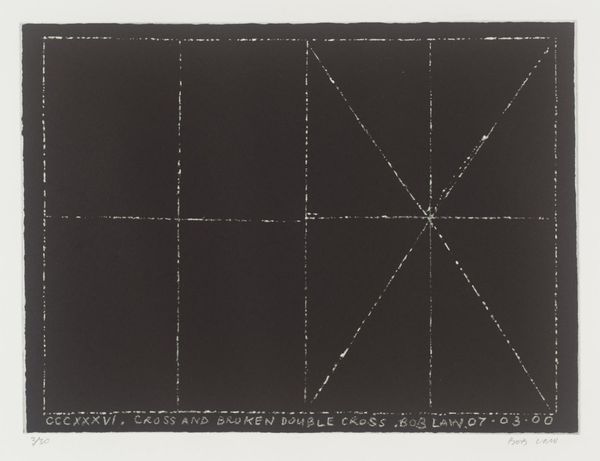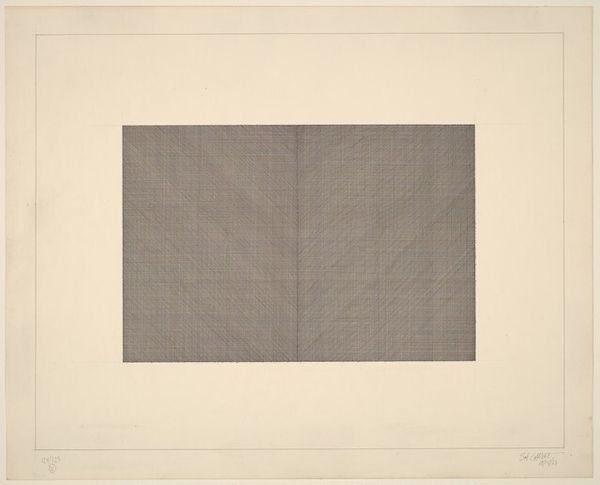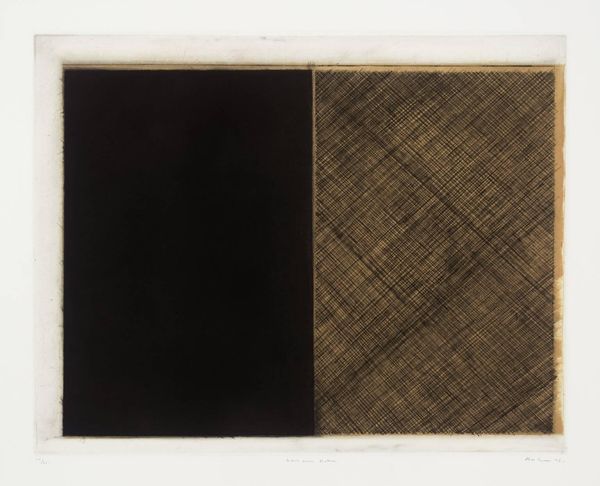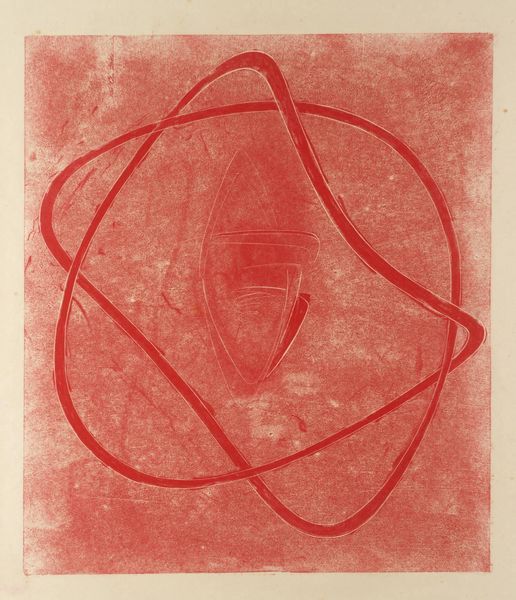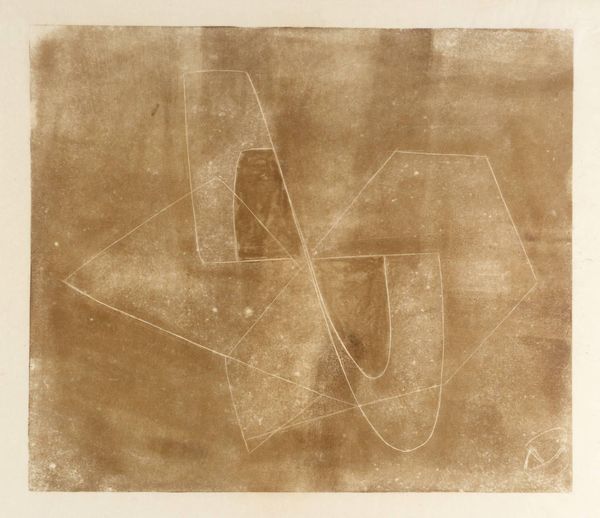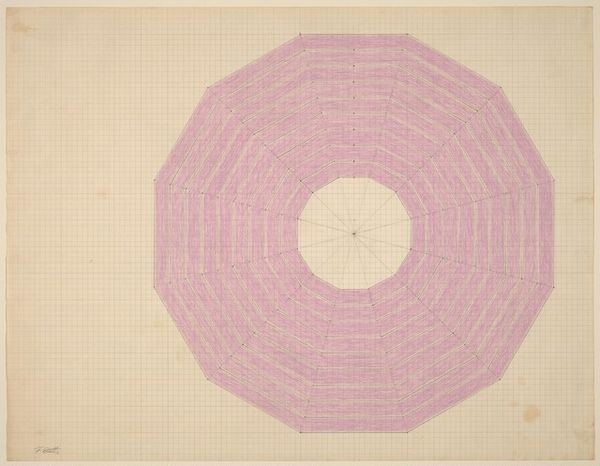
#
water colours
# print
#
geometric
#
line
#
watercolor
#
monochrome
Dimensions: image: 29 x 35.5 cm (11 7/16 x 14 in.) sheet: 43.4 x 50.5 cm (17 1/16 x 19 7/8 in.)
Copyright: National Gallery of Art: CC0 1.0
Editor: This print, titled "Radiance," was created by Cestmir Kafka in 1973. It appears to be a monochrome print, mostly reddish-brown, with some light geometric lines that crisscross through a central glowing area. What's your read on this piece? Curator: Looking at Kafka’s "Radiance" through a historical lens, I consider the socio-political context of its creation. In 1973, Czechoslovakia was under Soviet influence. How might the seeming simplicity, the meditative quality of "Radiance," be read in opposition to, or perhaps as a subtle commentary on, the controlling socialist realist aesthetic imposed at the time? Is it a rejection of overt propaganda through abstraction? Editor: So, you think it could be a form of protest, not in your face but hidden? Curator: Exactly. Many artists used abstraction as a subtle way to critique the regime. Also, consider the title itself, "Radiance." What does that signify during a period of oppression? Is it about hope, enlightenment, or inner strength? This gets further interesting considering where and how art was exhibited in Soviet satellite states. Who was seeing this, and in what context? Editor: That’s a good point; where it was shown matters a lot. The geometric lines, are those just aesthetic or do they play a role? Curator: Geometric abstraction has a history of being associated with utopian ideals. Are the lines perhaps symbolic of structure and order imposed upon that "radiance," a tension between control and freedom? Or do the crossing lines perhaps recall religious symbolism, given the cultural environment Kafka operated in? It makes you wonder. Editor: I never would have considered it like that, I was just thinking about the composition. Curator: It’s easy to get lost in aesthetics. But understanding art requires thinking about its public role, and how socio-political forces shape not only the production, but the reception, too. Editor: Thanks for the insightful way to view this! It gives me a lot to consider!
Comments
No comments
Be the first to comment and join the conversation on the ultimate creative platform.
